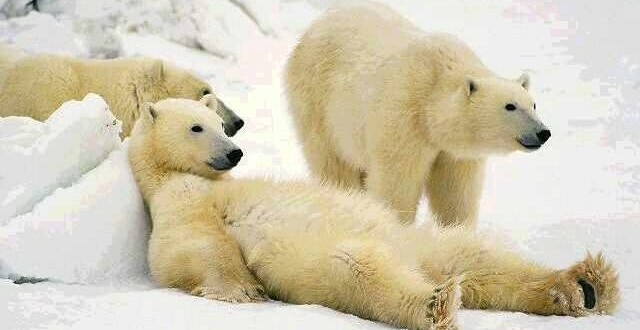The polar bear population in the southern Beaufort Sea — considered one of the populations most vulnerable to reductions in Arctic sea ice — dropped by roughly 40 percent between 2001 and 2010, according to a new study by U.S. and Canadian scientists.
The bears fared especially poorly in the middle of the decade, according to the study, published online in the journal Ecological Applications. The population of youngest bears was most hurt, with few surviving in the years 2004 to 2006, according to the study.
Perhaps even more worrisome, just two of 80 polar bear cubs that the international team tracked between 2003 and 2007 survived, according to the study. Normally about half live.
“Climate change is not some future threat,” Sarah Uhlemann, senior attorney for the Center for Biological Diversity, one of the groups that has been fighting to save polar bears, told the Los Angeles Times. “Global warming is happening now and killing polar bears now.”
Polar bears spend much of their waking lives on Arctic sea ice floes, eating seals that are also dependent on sea ice. As the ice has dramatically shrunk, the bears have been forced into long, painful swims in search of new ice.
The bear population in the southern Beaufort Sea appears to have stabilized between 2008 and 2010, according to scientists. They said the stabilization appeared to be because of unusual oceanographic conditions, less competition or behavioral changes.
Some polar bears stayed on land during the summer, feeding on subsistence-hunted bowhead whale carcasses.
Conservationists have predicted that more than two-thirds of the world’s polar bear subpopulations could be extinct by 2050.
Agencies/Canadajournal
 Canada Journal – News of the World Articles and videos to bring you the biggest Canadian news stories from across the country every day
Canada Journal – News of the World Articles and videos to bring you the biggest Canadian news stories from across the country every day



